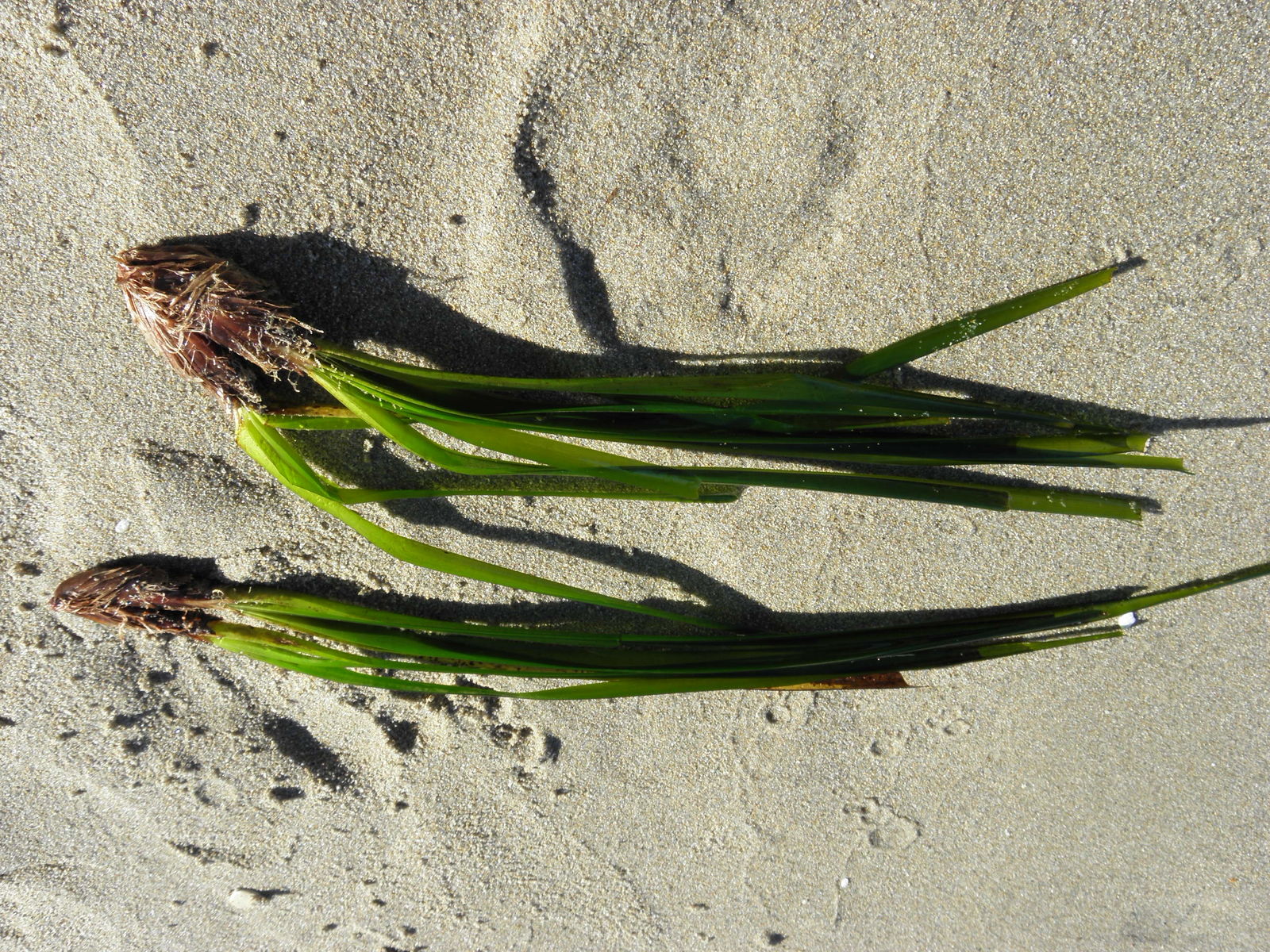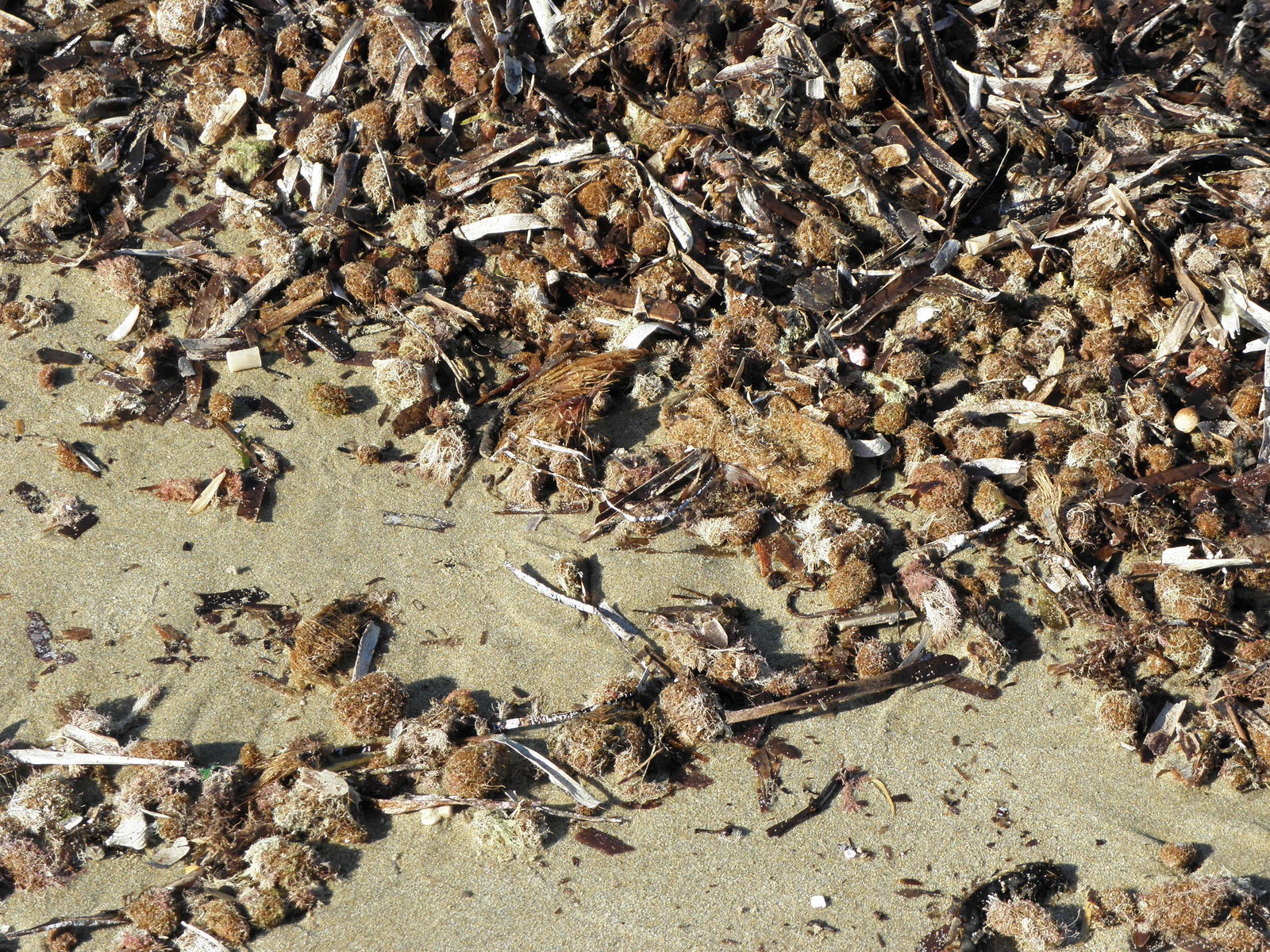Family: Posidoniaceae
Author: (L.) Delile
Bibliography: Descr. Egypte, Hist. Nat.: 78 (1813)
Year: 1813
Status: accepted
Rank: species
Genus: Posidonia
Vegetable: False
Observations: Medit.
Description
Mediterranean tapeweed, scientifically known as Posidonia oceanica, is a vital and distinctive marine plant found primarily in the Mediterranean Sea. First described in 1813, this seagrass holds great ecological importance in coastal ecosystems.
The Mediterranean tapeweed belongs to the Posidoniaceae family, and the plant’s dense underwater meadows provide a crucial habitat for a multitude of marine species. These meadows are often compared to terrestrial forests due to their complex structure and the biodiversity they support. They play a pivotal role in maintaining the marine environment’s health, offering shelter and food for aquatic life.
Posidonia oceanica features ribbon-like leaves that grow in clusters and can reach lengths of up to 1.5 meters. These meadows thrive in clear, shallow waters where they anchor into sandy or muddy substrates. The plant’s robust root systems help stabilize the seafloor, preventing erosion and maintaining water quality by trapping particles and cycling nutrients.
The importance of Posidonia oceanica extends to climate regulation and carbon sequestration. These underwater meadows are incredibly efficient carbon sinks, sequestering significant amounts of carbon dioxide, thus contributing to climate change mitigation. Additionally, they produce oxygen, benefiting both marine organisms and the overall health of coastal waters.
Unfortunately, Posidonia oceanica faces several threats, primarily from human activities. Coastal development, pollution, and anchoring of boats can damage these delicate meadows. Additionally, climate change and rising sea temperatures pose significant challenges to their survival. Conservation efforts are essential to protect this delicate species and the numerous ecological benefits it provides.
In summary, Mediterranean tapeweed, or Posidonia oceanica, plays a crucial role in marine ecosystems within the Mediterranean region. From providing habitats to marine life to supporting coastal stability and combating climate change, the preservation of this seagrass is of utmost importance.
Common Names
Eng: mediterranean tapeweed, neptune grass, species code: po
Mlt: alka
En: Mediterranean tapeweed, Neptune Grass, Species code: Po, Neptunegrass, Posidonia
Ar: شتناره (شِتناره)، سنتاره (سِتناره)
Ca: Alga de vidriers, Posidònia
Fr: Posidonie, Chiendent marin, Paille-de-mer, Pelote-de-mer, Pelote de mer
De: Neptungras, Posidonie, Seegras
It: Posidonia
Mt: Alka
Synonyms
- Caulinia oceanica ((L.) DC.)
- Aegle fragilis (Dulac)
- Taenidium oceanicum ((L.) Targ.Tozz.)
- Kernera oceanica ((L.) Willd.)
- Taenidium acuminatum (Targ.Tozz.)
- Zostera oceanica (L.)
- Alga oceanica ((L.) Kuntze)
- Posidonia caulini (K.D.Koenig)
Distribution
- Albania (native)
- Algeria (native)
- Baleares (native)
- Corse (native)
- Cyprus (native)
- East Aegean Is. (native)
- Egypt (native)
- France (native)
- Greece (native)
- Italy (native)
- Kriti (native)
- Libya (native)
- Morocco (native)
- Sardegna (native)
- Sicilia (native)
- Sinai (native)
- Spain (native)
- Tunisia (native)
- Turkey (native)
- Turkey-in-Europe (native)
- Yugoslavia (native)
Additional Images
Bark
Taken Oct 13, 2020 by Palmeri Alberto (cc-by-sa)
Taken Jun 29, 2022 by Bio.sylvie (cc-by-sa)
Taken Nov 4, 2021 by Dieter Albrecht (cc-by-sa)
Taken Feb 10, 2008 by EOL − sarah faulwetter (cc-by-nc-sa)
Taken Feb 8, 2008 by EOL − sarah faulwetter (cc-by-nc-sa)
Habit
Taken Jun 29, 2022 by Nathalie Potel (cc-by-sa)
Taken Jan 1, 1900 by EOL − Albert kok (cc-by-sa)
Taken Jun 7, 2001 by Tela Botanica − Liliane ROUBAUDI (cc-by-sa)
Taken Mar 4, 2015 by Tela Botanica − Geneviève Botti (cc-by-sa)
Taken Nov 4, 2021 by Dieter Albrecht (cc-by-sa)

© copyright of the Board of Trustees of the Royal Botanic Gardens, Kew.

© copyright of the Board of Trustees of the Royal Botanic Gardens, Kew.
Other
Taken Jun 22, 2022 by Nathalie Potel (cc-by-sa)
Taken Jun 29, 2022 by Nathalie Potel (cc-by-sa)
Taken Jun 1, 2019 by Buscemi Giuseppe (cc-by-sa)
Taken Sep 30, 2020 by maud brunoni (cc-by-sa)
Taken Apr 15, 2019 by roselyne loriau (cc-by-sa)
Fruit
Taken Jun 12, 1999 by Tela Botanica − Liliane Roubaudi (cc-by-sa)
Taken Jun 29, 2021 by Nobili Maria Teresa (cc-by-sa)
Taken Jun 22, 2021 by Henri Canning (cc-by-sa)
Taken Oct 8, 2021 by Belinda Bouman (cc-by-sa)
Taken Sep 19, 2021 by Xavier Charrier (cc-by-sa)
Leaf
Taken Jun 22, 2022 by Nathalie Potel (cc-by-sa)
Taken Jun 29, 2022 by Nathalie Potel (cc-by-sa)
Taken Jun 22, 2022 by Nathalie Potel (cc-by-sa)
Taken Apr 15, 2022 by Arlefotocomún (cc-by-sa)
Taken Apr 8, 2022 by Quiñoy Yago (cc-by-sa)
Sources
- WFO (No URL)
- IPNI (No URL)
- GBIF (https://www.gbif.org/species/5328663)
- POWO (http://powo.science.kew.org/taxon/urn:lsid:ipni.org:names:603103-1)
- PlantNet (https://identify.plantnet.org/species/the-plant-list/Posidonia oceanica (L.) Delile)
Specifications
Growth habit: Forb/herb
Growth
Ph maximum: 9.0
Ph minimum: 8.0
Light: 7
Atmospheric humidity: 9
Bloom months: [‘jan’, ‘feb’, ‘mar’, ‘apr’, ‘may’, ‘jun’, ‘oct’, ‘nov’, ‘dec’]
Soil nutriments: 7
Soil salinity: 9

























